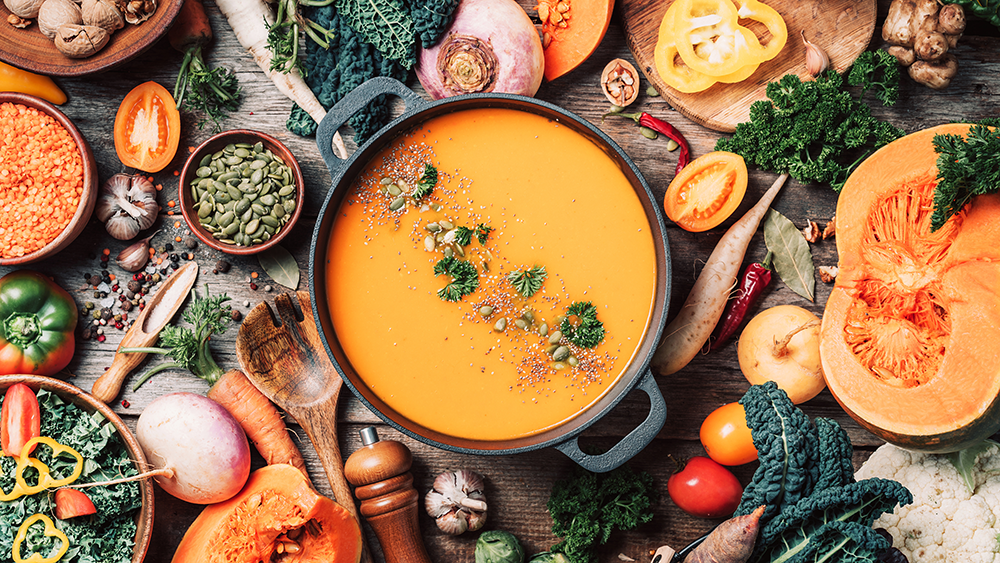By Jill Goodwin, Contributor
Just like all fads, food trends come and go. If you want your restaurant to stay popular, relevant, and exciting, you have to keep on introducing new dishes and drinks. While customers may have a few favorites, a menu that never changes gets boring, fast.
At the end of the day, menu compilation is a creative process not unlike that of a painter or a fashion designer. All of these processes require a keen knowledge of the respective craft plus an established understanding of how it will be received socially.
Menu development, however, involves something unique: a passion for food and flavor. Without these essential ingredients, even the most exquisitely presented meals will fall flat.
If you need a little guidance, take a look at the method behind great menu development and the creative process that goes into changing things up regularly.
Time to Refresh Your Menu? 3 Tips to Bear in Mind
Developing a new menu from scratch requires considerable research, planning, and hard work. Depending on the style and cuisine of your restaurant or bar, creating a menu that reflects the atmosphere and intention of that environment can be a challenge.
You want to create an assortment of dishes, drinks, or entrees that merge cohesively with the overall brand aesthetic, too. And of course, most importantly—everything you create needs to be absolutely delicious.
But finding inspiration is no piece of cake. In fact, it takes some chefs years to compile a new menu, and there are even people whose full-time job is creating fresh menus for restaurant chains and standalone establishments.
If you’re seeking inspiration but not finding it easy, here are three things to bear in mind.
Always Be on the Lookout for Inspiration
If you’re feeling stuck about which direction to take your new menu in, you need to stop forcing it and allow it to come naturally.
So how do you do that?
You go out into the world and you gather ideas. Eat unusual foods and drink exotic drinks. Watch a film about foreign cuisine. Be open to inspiration.
During the brainstorming phase of your new menu development, surround yourself with people, ingredients, and environments that stimulate your mind and engage your palate. For example:
Visit restaurants or bars you’ve never been to
Subscribe to a new food or drink magazine
Read up on innovative food menus from around the world
Follow chefs and foodies you admire on social media
Travel to a country with exciting food culture
The most important thing to remember is to not let inspiration slip through your fingers. That means carrying a notebook or journal with you, so that every creative thought gets jotted down instantly. If you’re not much of a writer, keep your smartphone handy for voice notes.
Establish A Menu Theme
Sometimes, when you’re trying to come up with new ideas, it helps to have a theme in mind. Take time to consider what your restaurant or bar aims to deliver to its guests, and use that as a guideline for where to take your new menu rotation.
Customers crave a sense of consistency and continuation. So, unless you’re wanting to completely reinvent your brand identity or introduce new dishes for specific diets, sticking to the themes you have used in the past is a good method for plotting your next move.
If you’re a visually oriented person, drawing up a mind map that starts with the heart of your restaurant’s mission can help you to conceptualize peripheral ideas from one, central theme.
For example, if your restaurant is a family-style Italian eatery that focuses on hearty, crowd-pleasing foods, you’ll want to try and come up with ideas that resonate with that model. Alternatively, a more avant-garde gastronomy restaurant should focus on cutting-edge flavors and innovative approaches to food.
Furthermore, you need to consider the kind of customers you get on a daily basis. What have they come to know, love, and expect from your brand? These are all good questions to ask yourself.
Create a Comprehensive Menu Formula
Every bar, restaurant, or deli needs a solid menu formula.
A menu formula stops you from creating a menu that lacks flow and it gives you a much more cohesive outline to work within.
Some things to consider when creating a menu formula could include:
What are your menu categories?
Do you cater for vegans, vegetarians, or food allergies?
Do you want to serve daily specials?
Will you have a set menu option?
What is your budget/food costs per portion?
How many items do you want on your menu?
Instead of focusing on the food first and the outline later, starting with the outline first can make the inspiration process far more realistic. Once you know the general formula of how you want your menu to look and feel, filling in the dishes and drinks may become a lot easier.
Bonus Tip: Consider Seasonality
Another great way to get those creative kitchen juices flowing is to look at what’s available from a local, seasonal perspective. Different products and ingredients are in season throughout the year and this can significantly impact the food and drink your establishment serves.
A seasonally guided menu not only makes planning simple, but it can help you to save money too. Seasonally available products tend to be cheaper than internationally imported ones, and they’re often more nutrient-dense, too.
Keep Evolving to Keep Operating
Always having new things to try on your menu is no small challenge. But evolving is part of what will keep your restaurant relevant and appealing. So, instead of shying away from change, embrace it with open arms.
If you remain committed to the creativity of the kitchen and actively seek out new flavors, try new sweet treats, or explore different styles of cooking, finding inspiration for new menu items will come naturally. Stay focused, stay curious, and stay open to change.







